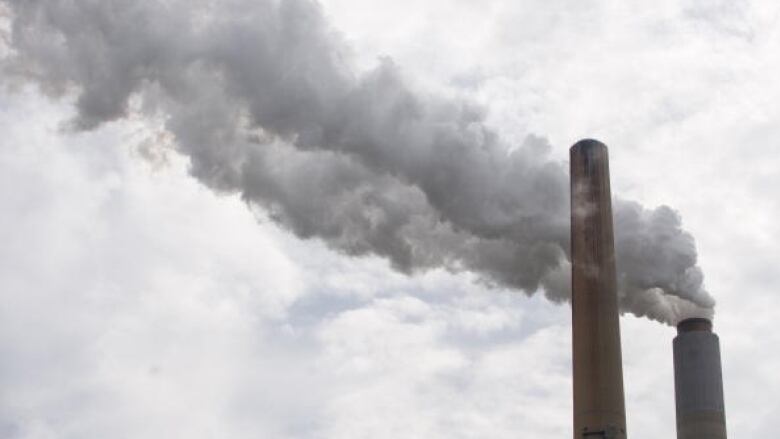Elon Musk's $100M US carbon capture contest offers 'a lot of motivation' for research: Sask. prof
U of Regina engineer 'a bit surprised, but I'm really happy that he's coming around to this kind of issue'

A Saskatchewan researcher says he'sglad to see one of the world's richest people making a major investmentin research and development of carbon emissions technology.
Tesla co-founder and SpaceX CEO Elon Musk has announced he and his charity foundation will spend$100 million US about $127 millionCdn on a contest that will see researchers createprojects to pullCO2 out of the air or ocean.
"I'm a bit surprised, but I'm really happy that he's coming around to this kind of issue," said Raphael Idem, a University of Regina engineering professor and the SaskPower clean energy research chair at the university.
There's little funding granted for people to conduct clean energy research, he said. Different levels of government provide some,but not all governments are equally devoted to that field of research, he said.
"Coming from [Musk], who's not in government and who is looking at the challenge it's a lot of motivation for a lot of people to really get into it," said Idem.
"Part of it is to win the competition. But by so doing, you'll also be able to come up with new ideas, with new technologies. So it's a very good thing."
In a statement Monday, the non-profit XPrize, which is organizingthe carbon capture competition, announced registration will open April22 Earth Day and the contest will run for four years.
Projects will be evaluated based on factors like how much CO2 is removed,energy efficiency andhow long carbon dioxidecan be stored.
After 18 months, the top 15 teams will get $1 million in funding, and 25 student scholarships for $200,000 each will be awarded to student teams.
Following that, the grand prize winner will get $50 million, with the runners-up getting$20 million and $10 million.
CO2 capture vital in move to clean energy: prof
Idem sees carbon capture the process ofremoving harmful carbon dioxide particles from the atmosphere as asignificant part of moving toward clean energy.
It would be too expensive to endfossil fuel usecompletely, and renewable and sustainable energy sources such as wind and solarare not reliable, he said.
The Intergovernmental Panel on Climate Changethe United Nations' climate change science body has also saidcarbon capture is necessary to limit global warming.
There are two main types of carbon capture, the IPCC says: one is enhancing natural processes for carbon removal, such as planting trees, which convert CO2 into oxygen through photosynthesis. The other iscapturing it from the air and storing it elsewhere.
Carbon capture in Sask.
The XPrize contest focuses on the latter and there's a working example of that sort of system near Estevan, Sask., about 190 kilometres southeast of Regina.
SaskPower's Boundary Dam Power Station, a coal-powered station, has used carbon capture and storage technology since 2014. It had captured over 3.8 million tonnes of carbon as of December 2020, according to a SaskPower blog post.

The CO2emitted from burning coal at the dam is filtered on its way out of the smoke stack, then absorbed by a solvent, or solution.
The carbon is then packed so tight that it acts like a liquid, and is either stored in the Weyburn oil field or a large sandstone water reservoir located 3.4 kilometres underground.
The storage reservoir a project known as Aquistore and its environmental impacts are studied by the Petroleum Technology Research Centrein Saskatchewan.
A critique of projects such as Aquistore is that they promote the continuation of coal-generated power, said Norm Sacuta, the director of communications at the PTRC a not-for-profitfounded by Natural Resources Canada,thegovernment of Saskatchewan, the University of Reginaand theSaskatchewan Research Council.
But it's really the second piece to CO2 capture, because emissions have to go somewhere, Sacuta said.
"We're doing the research that's going to allow other projects to learn about the baseline measurement and monitoring that you need to do to make sure the CO2 stays where it is."
The issue with carbon capturing technology at the moment is the cost, said Sacuta, who compared the situation to when pocket calculators used to cost hundreds of dollars.
"That kind of technology shift needs to come with carbon capture, and that will come as more plants get built," he said.
Carbon capture and storage also only works for large sources, such as a mill not a vehicle, he added.
With files from David Shield and The Associated Press












_(720p).jpg)


 OFFICIAL HD MUSIC VIDEO.jpg)
.jpg)



























































































